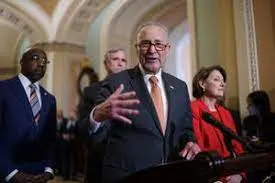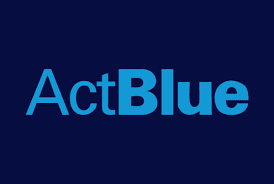Explore the filibuster in U.S. politics, its history, purpose, and growing debate about its reform. Learn why it remains a critical, yet controversial tool in Congress.
The Filibuster: A Deep Dive into Its Role and Controversy
The filibuster, a tactic used in the U.S. Senate, has long been a subject of debate in American politics. Rooted in a procedural tool designed to extend debate and delay legislation, it has become a powerful instrument in shaping political outcomes, often standing as a roadblock to proposed laws. The growing controversy surrounding its use has led to calls for reform, with proponents and critics offering starkly different views on its place in the legislative process.
What Is a Filibuster?
A filibuster occurs when one or more senators attempt to prevent a vote on a bill by prolonging debate on the matter. The most common filibuster tactic involves giving long speeches, often for hours, to stall progress. Under Senate rules, the filibuster can continue indefinitely unless 60 senators vote to invoke “cloture,” which ends debate and forces a vote on the legislation. This supermajority requirement makes it exceedingly difficult for most bills to pass without significant bipartisan support.
While filibusters can be seen as a tool for minority parties to protect their interests, they also frequently halt bills supported by the majority. The filibuster is unique to the Senate, as the House of Representatives operates under stricter rules that limit debate time.

A History of the Filibuster in U.S. Politics
The filibuster first emerged in the early 19th century, evolving from a parliamentary tactic used in European countries. The first notable filibuster in the United States Senate took place in 1837 when Senator William Hendricks of Indiana used the technique to delay a vote. Over the years, the filibuster became a common tool for both minority and majority parties, although its use was relatively rare until the 20th century.
One of the most infamous filibusters occurred in 1957 when Senator Strom Thurmond of South Carolina spoke for 24 hours and 18 minutes in opposition to the Civil Rights Act. This moment in history highlighted the filibuster’s potential to block landmark legislation, especially when it came to racial equality.
The Filibuster and Its Current Use
Today, the filibuster continues to play a central role in the Senate. It has been used to block a wide range of policies, from judicial appointments to major economic reforms. For instance, the Affordable Care Act, or “Obamacare,” faced multiple filibuster attempts before it was passed in 2010. More recently, during the Biden administration, filibusters have been employed to block voting rights legislation and other key reforms.
Critics of the filibuster argue that it allows a small minority of senators to thwart the will of the majority. With the Senate often divided between parties, the supermajority requirement makes it hard to pass any significant legislation. This gridlock has led to frustration among the American public, with many questioning whether the filibuster still serves a valuable purpose in modern governance.

The Debate: To Reform or Abandon the Filibuster?
The debate over whether to reform or eliminate the filibuster has intensified in recent years. Advocates for maintaining the filibuster argue that it protects the interests of minority parties and prevents hasty decision-making in an often-polarized political environment. It is seen as a safeguard against legislation that could harm minority groups or overreach governmental power.
On the other hand, reformers argue that the filibuster contributes to legislative dysfunction. They assert that the current system allows a minority of senators to dominate decision-making, preventing essential reforms from being enacted. Proposals to reform the filibuster include reducing the number of votes required to invoke cloture or eliminating it altogether in certain circumstances, such as for voting rights or judicial nominations.
Moving Forward: The Future of the Filibuster
The future of the filibuster remains uncertain. While some Democrats have pushed for its reform, particularly in light of key legislative priorities, Republicans generally oppose changes, seeing the filibuster as a necessary tool to protect their agenda. It is clear that the filibuster continues to shape the political landscape in profound ways.
As Congress grapples with issues such as healthcare, climate change, and voting rights, the question remains: Should the filibuster be reformed to allow more effective governance, or should it remain as a check on the majority’s power? Only time will tell how this controversial tool will evolve in the years to come.





